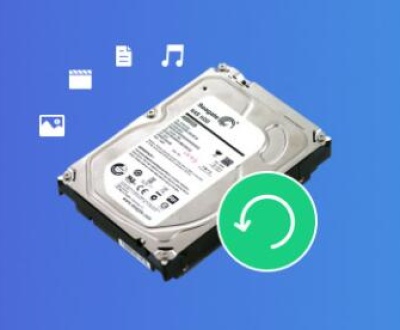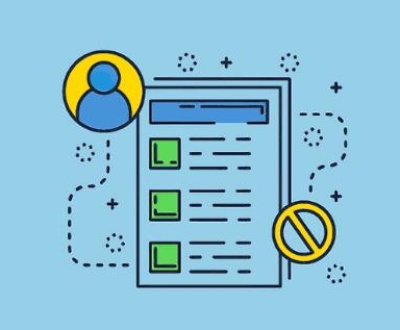Backing up multiple computers is crucial for data protection, especially in environments like businesses or educational institutions where data loss can have significant consequences. Whether you’re managing a small office or a larger network, creating a reliable backup strategy requires careful planning and the right tools.
1. Understanding Your Backup Needs
Before selecting a backup solution, it’s important to understand your specific needs. Consider the following factors:
Number of Computers: The scale of your operation influences the type of backup solution you need. For a small office with 5-10 computers, a simple network-attached storage (NAS) device may suffice. For larger operations, more robust solutions like a dedicated backup server or cloud-based services are necessary.
Data Volume: Assess the amount of data that needs to be backed up. This includes everything from documents and emails to databases and multimedia files.
Frequency of Backups: Determine how often data changes and how frequently backups need to be performed. Critical data may require real-time or daily backups, while less critical data might only need weekly or monthly backups.
Recovery Time Objective (RTO): This is the maximum acceptable length of time that a system can be offline. Your backup solution should allow you to meet this requirement in case of data loss.
Budget: The cost of backup solutions varies widely, from affordable consumer-grade products to expensive enterprise solutions. Your budget will guide your choice of software, hardware, and storage options.

2. Choosing the Right Backup Solution
There are several types of backup solutions available, each with its advantages and disadvantages. Here are some popular options:
A. Local Backups
Local backups involve storing data on physical devices such as external hard drives, NAS devices, or dedicated backup servers.
External Hard Drives: These are cost-effective and easy to use. You can connect them directly to each computer and schedule backups using built-in software like Windows Backup or Time Machine on macOS. However, they can be cumbersome to manage if you’re backing up multiple computers.
Network-Attached Storage (NAS): NAS devices allow multiple computers to back up to a centralized storage location over a network. This solution is scalable, allowing you to add more storage as needed. It’s ideal for small to medium-sized offices. NAS devices often come with their own backup software, which can automate the process.
Dedicated Backup Servers: For larger environments, a dedicated backup server may be necessary. This server can handle the backup processes for multiple computers, providing a centralized and scalable solution. However, this option is more complex and expensive to set up and maintain.
B. Cloud-Based Backups
Cloud backups store data on remote servers managed by third-party providers. This option offers several advantages:
Accessibility: Data can be accessed from anywhere with an internet connection, making it ideal for remote teams or offices with multiple locations.
Scalability: Cloud storage can easily be scaled up or down depending on your needs, without the need for additional hardware.
Redundancy and Security: Cloud providers often offer redundant storage and high-level security measures, ensuring your data is protected against both hardware failures and cyber threats.
Popular cloud backup services include:
Microsoft OneDrive: Integrated with Windows, it’s easy to set up and manage for businesses already using Microsoft 365.
Google Drive: Offers seamless integration with Google Workspace and other Google services.
Dropbox Business: Known for its ease of use and collaboration features, it’s a strong option for teams.
Amazon S3: Ideal for businesses needing highly scalable and customizable backup solutions.
C. Hybrid Backups
Hybrid backup solutions combine local and cloud-based backups, offering the best of both worlds. This approach provides the speed and control of local backups with the redundancy and accessibility of cloud backups.
3. Implementing Your Backup Strategy
Once you’ve chosen a backup solution, it’s time to implement your strategy. This involves setting up the software, configuring backup schedules, and ensuring all computers are correctly connected to the backup system.
A. Setting Up Backup Software
Most backup solutions come with software that helps automate the process. Here’s a general overview of setting it up:
Install the Software: Install the backup software on each computer or configure it centrally if you’re using a NAS device or backup server.
Configure Backup Schedules: Decide how often backups should occur. For critical data, daily or real-time backups are recommended. For less critical data, weekly backups may suffice.
Select Files and Folders to Back Up: Choose which files, folders, or drives need to be backed up. Consider including system files and application data to ensure full recovery in case of a system failure.
Set Retention Policies: Determine how long backups should be kept before they are deleted. This helps manage storage space and ensures that you can restore data from a specific point in time if necessary.
Test the Backup Process: Before fully relying on your backup system, test it to ensure everything is working correctly. Perform a test restore to verify that data can be recovered without issues.
B. Ensuring Data Integrity and Security
Data integrity and security are crucial aspects of any backup strategy:
Encryption: Ensure that your backups are encrypted, both in transit and at rest. This is especially important for cloud backups where data is transmitted over the internet.
Access Control: Limit access to backup data to authorized personnel only. This can prevent accidental or malicious deletion or alteration of backup files.
Regular Audits: Periodically audit your backup processes and policies to ensure compliance with your organization’s data protection standards.
C. Monitoring and Maintenance
Ongoing monitoring and maintenance are essential to ensure your backup system remains reliable:
Automated Alerts: Set up automated alerts to notify you of any issues, such as failed backups or low storage space.
Regular Testing: Schedule regular tests of your backup and recovery processes to ensure they function correctly. This can include both automated tests and manual verification.
Updating Software: Keep your backup software up to date to benefit from the latest security patches and features.
4. Best Practices for Backing Up Multiple Computers
Here are some best practices to follow when backing up multiple computers:
3-2-1 Backup Rule: This rule suggests keeping three copies of your data (one primary and two backups) on two different types of storage media, with one copy stored offsite (e.g., in the cloud).
Centralized Management: For businesses, it’s advisable to centralize backup management to ensure consistency and simplify maintenance.
Documentation: Maintain detailed documentation of your backup processes, including schedules, retention policies, and recovery procedures. This is essential for troubleshooting and training new staff.
Training and Awareness: Educate employees on the importance of data backups and ensure they understand how to initiate manual backups if necessary.
5. Challenges and Solutions
Backing up multiple computers comes with its own set of challenges:
Network Bandwidth: Large backups can consume significant network bandwidth, potentially affecting other operations. To mitigate this, schedule backups during off-peak hours or use bandwidth throttling features in your backup software.
Storage Management: As data grows, managing storage becomes more complex. Consider implementing storage optimization techniques such as deduplication and compression.
Disaster Recovery Planning: A backup strategy should be part of a broader disaster recovery plan. Ensure that you have a clear plan for restoring data in the event of a catastrophic failure.
About us and this blog
Panda Assistant is built on the latest data recovery algorithms, ensuring that no file is too damaged, too lost, or too corrupted to be recovered.
Request a free quote
We believe that data recovery shouldn’t be a daunting task. That’s why we’ve designed Panda Assistant to be as easy to use as it is powerful. With a few clicks, you can initiate a scan, preview recoverable files, and restore your data all within a matter of minutes.
Subscribe to our newsletter!
More from our blog
See all postsRecent Posts
- How to save tiktok videos on computer 2025-04-30
- How to watch gopro videos on computer 2025-04-30
- How to save video from blink video doorbell to computer? 2025-04-30

 Try lt Free
Try lt Free Recovery success rate of up to
Recovery success rate of up to









